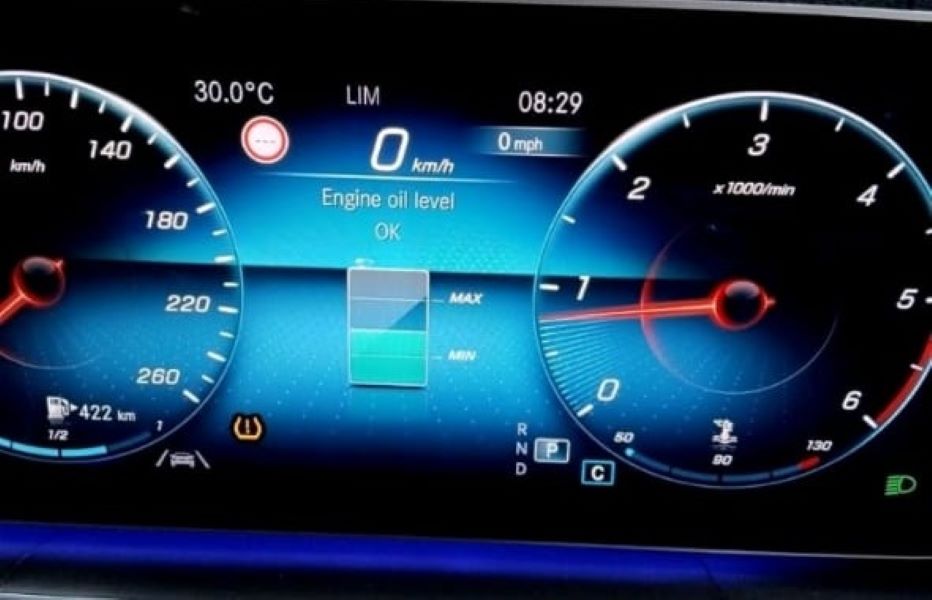Table of Contents
Engine is Burning Oil : Case Study
Vehicle: Mercedes-Benz GLE 300 Equipped with OM654 Engine
A common concern among vehicle owners, especially in modern diesel engines, is excessive oil consumption. In this case study, we explore a scenario involving a Mercedes-Benz GLE 300 equipped with the OM654 engine. The vehicle was brought to the workshop due to the engine burning oil at an unusually high rate. This article will walk you through the diagnostic process, root cause analysis, and repair procedures to resolve this issue effectively.
Customer Complaint
The customer reported a noticeable decline in engine oil levels over a short driving period, without any visible oil leaks or warning lights indicating external problems. The objective of the inspection was to identify the root cause of why the engine is burning oil and provide a permanent solution.
Diagnostic Steps
1. Visual Inspection for External Oil Leaks
The first step involved conducting a thorough visual inspection of the engine for any external oil leaks. Special attention was given to areas around the:
- – Valve cover gasket
- – Oil pan
- – Timing chain cover
Result: No external oil leaks were detected.
2. Leak-Down and Compression Tests
To ensure the engine’s sealing integrity, leak-down and compression tests were performed. These tests help evaluate the condition of the piston rings, cylinder walls, and valve seals.
Result: Both tests returned normal values, ruling out immediate concerns with cylinder compression or valve sealing.

3. Inspection of Intercooler for Oil Ingress
The next step was to remove and inspect the intercooler for signs of oil accumulation. Oil ingress in the intercooler often points to issues with the turbocharger or crankcase ventilation system.
Result: No oil was found in the intercooler.
4. Examination of Air Intake System
The air intake duct connected to the turbocharger and the air intake hose were inspected for any signs of oil contamination.
Result: The air intake system was clean, with no oil residue or leaks observed.

Deeper Investigation
1. Removal of Engine for Detailed Analysis
Given the absence of external leaks and normal compression test results, the engine was removed for a more in-depth examination.

2. Inspection of Turbocharger
The turbocharger was disassembled and inspected. Traces of oil were observed inside the turbocharger housing, suggesting internal oil leakage.
3. Analysis of Piston Oil Rings
Upon further disassembly of the engine, the piston oil rings were carefully inspected. Measurements revealed that the oil ring clearance had increased significantly beyond the manufacturer’s specifications. This excessive clearance allowed oil to bypass the rings and enter the combustion chamber, leading to the engine burning oil excessively.
Findings and Conclusion
The root cause of the issue was determined to be excessive piston oil ring clearance. This allowed engine oil to seep past the rings, leading to oil consumption within the combustion chamber.
Solution
1. Replacement of Piston Oil Rings
The worn piston oil rings were replaced with new ones. The clearances were checked and adjusted to fall within the manufacturer’s specified range to prevent future oil leakage.
2. Reassembly and Testing
After replacing the piston oil rings:
- – The engine was reassembled and installed back into the vehicle.
- – The turbocharger was also cleaned and reinstalled.
- – A post-repair compression test was conducted to confirm proper engine sealing.
- – The vehicle was subjected to a test drive to monitor oil consumption and ensure no further issues were present.

Key Takeaways for Readers
If you encounter a similar situation where your engine is burning oil, consider the following steps:
- Visual Inspection: Rule out external leaks first to avoid unnecessary disassembly.
- Compression and Leak-Down Tests: These tests are crucial for identifying internal engine issues.
- Inspect the Turbocharger: Internal oil leaks in the turbocharger can contribute to oil consumption.
- Check Piston Oil Rings: Excessive clearance in the piston oil rings is a common culprit for oil burning.
- Follow Manufacturer Specifications: Ensure that all replacements and adjustments meet the recommended tolerances.
Conclusion
By following the diagnostic and repair steps outlined in this case study, the excessive oil consumption in the Mercedes-Benz GLE 300 was successfully resolved. Addressing issues like the engine burning oil early can prevent further engine damage and ensure optimal vehicle performance.
How often engine oil change
The frequency of engine oil changes for your Mercedes-Benz GLE 300 depends on the type of oil used, driving conditions, and manufacturer recommendations. Here are general guidelines:
1. Mercedes-Benz Recommendation
- – Interval: Typically every 10,000 miles (16,000 km) or 12 months, whichever comes first.
- – Oil Type: Fully synthetic engine oil, as specified in the owner’s manual (usually MB 229.51 or MB 229.52).
2. Severe Driving Conditions
If the vehicle is driven under severe conditions, such as frequent stop-and-go traffic, extreme temperatures, or towing, you may need to change the oil more frequently.
- – Interval: Every 5,000–7,500 miles (8,000–12,000 km).
3. Oil Life Monitoring System
Many modern Mercedes vehicles are equipped with an oil life monitoring system. This system alerts you when it’s time to change the oil based on driving habits and engine conditions.
— Salim, Mercedes Expert
Independent specialist in Mercedes-Benz diagnostics, CAN Bus analysis, troubleshooting case studies, and EV systems.







Leave a Reply